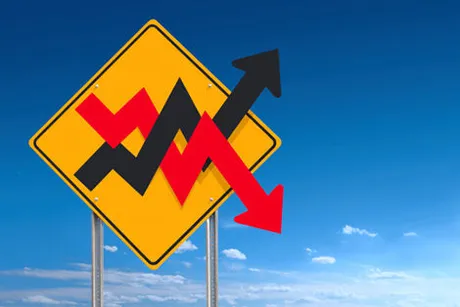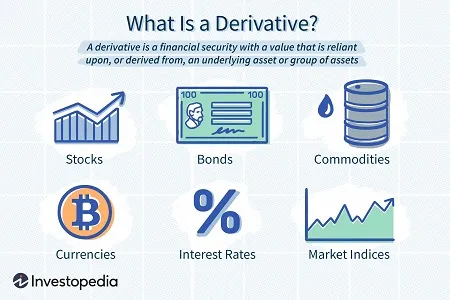
We're all familiar with stability derivatives.
- The first one I ever saw was SBD.
It worked very poorly; low liquidity and completely unstable peg.
- Then there was DAI.
Based on ETH collateral and prone to cascading liquidations during the bear market. Then other forms of collateral were allowed like USDC. This arguably centralizes the asset beyond all repair.
- Then there was UST.
UST worked pretty great until the entire thing imploded overnight. Systemic failure is systemic.
- And now we have HBD
Our own native asset works pretty well these days. It's gotten a bunch of upgrades like the ability to convert Hive directly into HBD given an upside pump. The stabilizer proposal has added exponential liquidity to the internal market and allows users to slosh around thousands of dollars at a time instead of double digits. It's fairly stable and has none of the systemic risks of the Terra Luna ecosystem.
In addition to all this.
There must be at least a dozen other algo stable-coins that I have no idea exist let alone how they actually work. At this point I'm fine with that, as I have little interest in wasting my time researching products that have over a 90% failure rate. If something new wants to catch my attention it can do so by merit alone without me having to go look for it.

Volatile polarization
Ultimately the pattern that I've noticed when it comes to algorithmic stable-coin derivatives is that no matter how they are implemented they all have the same outcome. The mechanics in play have but one function: to make the derivative as stable as possible, but in doing so these exact same mechanics guarantee that the collateral in question is made even more volatile than before.
The volatility is outsourced from the derivative to the collateral.
This creates a very weird dichotomy and perhaps even a hint of irony. Why? Because the entire point of having a stable coin is because crypto lacks stability. Businesses and economies demand a stable currency and a solid foundation so they can flourish and succeed. Thus, the fact that we are making the governance token that rules the entire network even more volatile tends to be a bit ironic.
At the same time I think most of us can agree that the price of Hive being more volatile is worth the benefit of having access to a stable asset on an atomic-swap level that exists on-chain. Certainly more agree with this statement now than they did a couple years ago when the peg was broken and Hive >> HBD conversions weren't even possible. HBD has made huge improvements in a relatively short amount of time. Used to be I would hear someone say we should just get rid of it every other week. That doesn't happen anymore.

But what if...
The concept I'd like to posit today is: what if we're doing this backwards? What if the derivative asset shouldn't be stable at all, but rather wildly volatile with the intention of making the collateral and governance coin stable? Could this work? Certainly no network in existence today could even attempt such a thing because it runs contrary to how they were built, but I'd like to imagine a new network could give it a whirl and test out the theory.
How would that even work?
Well the goal of any cryptocurrency has already been stated by degenerates time and time again. The term I'm referring to of course is "only up". Nobody wants number to go down, and if it does have to go down we only want it to go down a little bit or predictably bring the price back into alignment after a big pump in the markets.
Again, using Hive as an example, we've been hovering around this 30 cent level for quite a while. Imagine if the price spiked x2 like tomorrow. That would be bad. Why? Because every time Hive spikes we get 5 seconds of FOMO and then months and months of slow bleeding and selloffs. It's pretty damn annoying you've got to admit.
A volatility token could soften a pump like this by allowing some kind of conversion to take place in which the derivative is burned and the governance token is created with the intention of bringing the inflated price down.
So the governance token would become the stable coin?
Not necessarily. A network can set any rules it wants. Perhaps moving averages would be employed in order to measure the volatility. If volatility gets too high this could trigger the ability for the volatility token to activate, increasing the stability of the governance token while sending the derivative asset in the opposite direction.
It is in this way that a volatility token could act as a value capture mechanism for pumps that mutes the pump, and then slowly drips that value back into collateral as the hype dies down. Smaller pumps, but more importantly smaller dumps as well. This could be a highly desirable trait considering how many tokens bleed 90% of their value during a bear market.
Possible ways to implement conversions
-
Collateralized Debt This is how DAI and MAKERDAO mint tokens. ETH/BTC/USDC is locked in a contract and DAI can be pulled out of that contract as a loan given to oneself.
-
1:1 Instant Conversions This is how UST/LUNA did business. It was a terrible idea and resulted in the complete and utter systemic collapse of the entire system due to greedy VCs thinking they could get infinite 20% yields on a stablecoin.
-
Moving Average Conversions This is how Hive does business. The peg for HBD is much looser than a traditional stablecoin (1% swings are commonplace) but in combination with the haircut eliminates all the systemic threat present in the 1:1 model.
-
Sliding Scale Conversions This is an idea of my own design and would act as a variant of the 1:1 model. Instead of being able to convert an asset at a predetermined rate (like 1 HBD for $1 worth of Hive) this conversion would shift in one direction or another the more it gets used. This would allow an asset to still go up or down as normal but would limit the speed at which is happens. Again, volatility would be outsourced to the derivative to some degree based on the custom triggers chosen.
Imagine if the stable-coin was also the governance coin.
Unfortunately one of the most glaring problems with this strategy would be a money attack. Just take Hive for example. Would we really want some billionaire to be able to pump $100M into Hive and own half of all the tokens in existence? Uh, no thanks! I like the distribution right where it's at, thanks. If a billionaire pumps $100M to Hive I want to see the price of Hive do something crazy like x10 or x20, not an x2. This way only tens of millions of tokens could be purchased instead of hundreds of millions.
Is control of the network for sale?
Is providing extra liquidity to a network and creating a more stable environment worth the risk of a hostile takeover? Maybe for some projects. Just a matter of opinion really. I'd say it's not a great solution for Hive considering we've already had to deal with a hostile takeover and that was a definitively not fun experience. Should we avoid such a scenario at all costs going forward? Perhaps. It's up for debate.
Conclusion
Could a purposefully volatile derivative asset have value? Maybe this is a terrible idea. They can't all be winners, after all. Still sometimes it's worth going through the motions and figuring out the theory-crafting in order to determine if something like this could have merit or provide utility to some kind of niche function.
Personally I think we haven't even close to understanding these markets or how to manipulate them to our benefit. 99% of all DEFI assets crashed to zero, and the ones that survived haven't exactly proved themselves to be essential and irreplaceable. Rather they are just cool things you can do with your money like giving yourself a loan without spending crypto. It's pretty clear we have a long way to go before we can actually compete with a lot of these legacy systems in play.
Return from Stable Derivative vs Volatility Derivative to edicted's Web3 Blog
